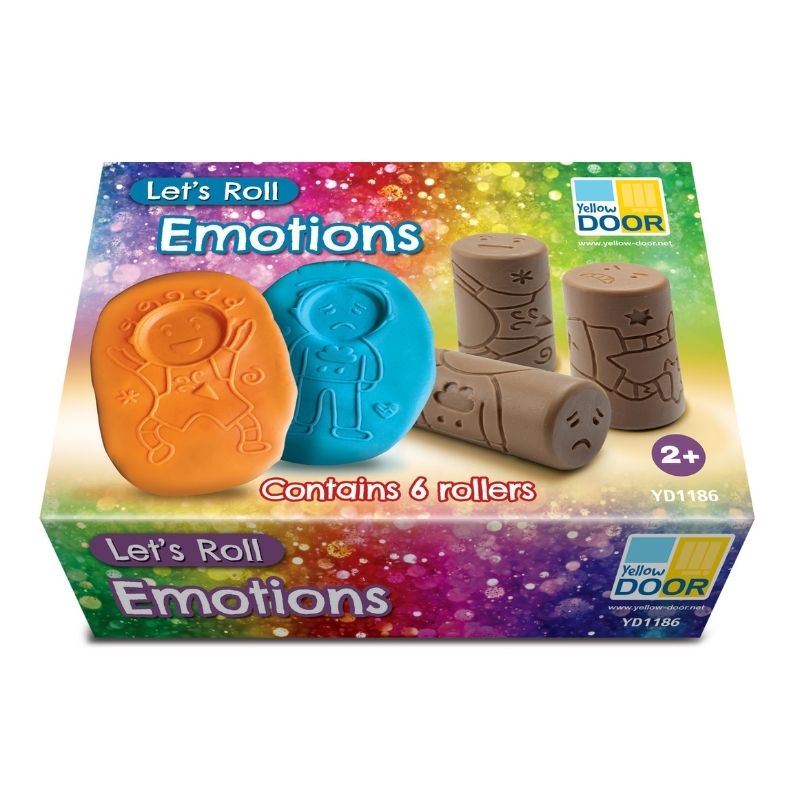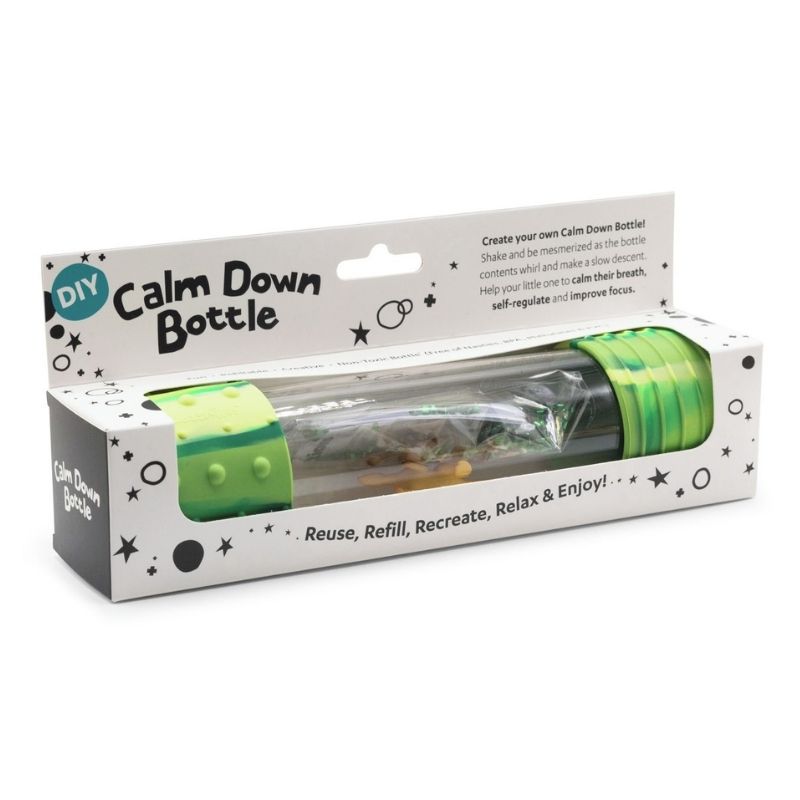NURTURING MINDS: Talking About Emotions
NURTURING MINDS: TALKING ABOUT EMOTIONS
Children's Mental Health Week 2024 is approaching, and it's a great time to delve into the importance of fostering mental well-being in our young ones. This year's theme revolves around My Voice Matters’, shedding light on crucial aspects of children's mental health. In this blog, we will explore what this week signifies, how to support children's emotional development, and ways to provide essential mental health care for our kids.
What is Children's Mental Health Week?
Mental Health Day for Kids is a day dedicated to raising awareness about the mental health challenges that children may face. It provides an opportunity to discuss the importance of mental well-being, break down stigmas, and offer resources for parents, educators, and caregivers to better support the mental health needs of children.
What is the Theme for Children's Mental Health Week 2024?
Children's Mental Health Week 2024 is centred around the theme of ‘My Voice Matters’. This theme aims to empower children and young people by providing them with the tools they need to express themselves. If children and young people feel that their voices are heard they can feel empowered to make a difference and have a greater sense of community and self-esteem. ‘This year, we want children of all ages, backgrounds and abilities to be empowered to work together to create a positive change for their mental health and wellbeing’ - Place2be (Launchers of Children’s Mental Health Week)
Let’s take a look at how we can support our Children,
How to Support Children's Emotional Development?
Supporting emotional development in children involves:
- Teaching Emotional Intelligence: Help children identify and understand their emotions. Teach them healthy ways to express and manage these feelings.
- Encourage Empathy: Promote empathy by encouraging children to consider others' feelings and perspectives.
- Realistic Expectations: Create a positive environment, that understands and takes account of of their age and developmental level.
How Do I Give My Child Emotional Support?
Offering emotional support involves:
- Active Listening: Pay close attention to your child's words and emotions. Validate their feelings and let them know you are there for them.
- Be Patient: Children may take time to process and express their emotions. Be patient and provide a supportive presence.
How Do You Contribute to Emotional Development?
Contributing to emotional development can be achieved by:
- Engaging in Play: Play is a natural way for children to express themselves and develop emotional intelligence.
- Modelling Healthy Emotions: Demonstrate healthy emotional expression in your own behaviour. Children often learn by observing.
How To Talk To Kids About: Feelings
Learning to walk, talk or our numbers and our ABCs are usually the big milestones in our children's development. But one thing that is harder to learn, and understand (even as adults) is our emotions, feelings and how to talk and express them. And learning to manage our feelings is a big part of our children's ongoing development. But, unlike learning to walk or talk, learning to understand and manage our emotions doesn't come instinctively: small people need lots of guidance, modelling and practice.
Our little ones are experiencing new emotions all the time, there are so many 'big feelings' going on and it can be so overwhelming for them to navigate, communicate and express them. Thankfully the help we give them as parents, caregivers and family makes a huge difference.
The more we talk to our little ones about their emotions, the more we can help them to understand and cope with these 'big feelings' and resolve challenges and frustrations when they arise. Which helps and supports them in their ongoing emotional well-being and development. Let's find out how:
Using Emotional Language: How to Talk to Your Kids About Feelings
Emotional language lays the foundation for effective communication with children. Here are some ideas to consider:
Label Emotions: Teach your child to recognise and label their emotions. For example, saying "I can see you're feeling frustrated" helps them connect the word with the emotion they're experiencing.
Express Your Own Emotions: Modelling emotional expression is powerful. Share your feelings with your child and explain why you're feeling a certain way. This helps normalise the range of emotions.
Some of our feelings are about adult issues, such as difficulty paying the bills. This is not as appropriate to talk with children about, but you can tailor our statement to be more kid-friendly.
Old way: “I don’t have enough money to pay rent.”
New way: “I’m frustrated with this math problem, I need to take a walk”
Use Storytelling: Storytelling is an excellent way to introduce different emotions. Share age-appropriate books that highlight characters experiencing various feelings, allowing your child to relate and understand.
For extra practice talking about feelings, labelling how characters from books or movies are feeling can be helpful.
“Wow, Bluey looks like his feelings were hurt, how do you think he is feeling?”
“The Elephant looks like she is feeling embarrassed, her head is down and her cheeks are red. What should he do?”
Ask Open-Ended Questions: Instead of asking closed questions like, "Are you sad?" try open-ended questions such as Tell me something that made you happy or proud today,” or “What made you worried today?” This encourages children to express their feelings more freely.
Empowering and encouraging your child to say how they feel and knowing that it is okay for them to feel that way is one of the strongest ways you can prepare them for difficult situations in life.
By modelling, labelling and practising talking about your child’s feelings, they will grow in their ability to recognise how they are feeling and be able to communicate it to you and those around them. As your child gets older, this will help them cope and problem-solve difficult situations.
Talking With Preschoolers About Emotions
Preschoolers are beginning to navigate the complex world of emotions. Here are some tailored approaches:
Keep It Simple: Use simple words to describe emotions. For example, instead of saying "frustrated," you might say "feeling a bit upset because things didn't go the way you wanted."
Use Visual Aids: Visual aids, like facial expressions or emojis, can help preschoolers associate emotions with expressions. Create a simple emotion chart together and discuss when they might feel each emotion.
Incorporate Play: Play is a natural way for preschoolers to express their emotions. Use dolls or stuffed animals to act out different scenarios, providing a platform for them to share their feelings through play.
Establish a Safe Space: Create an environment where preschoolers feel safe expressing their emotions. Reassure them that all feelings are valid, and you are there to support them.
Naming or describing emotions requires time and practice. In the early stages of development, children might not have the vocabulary for what they’re feeling. They can also face challenges in recognising the emotions of others too.
Understanding that there is a considerable variation in our ability to interpret and acknowledge emotions (even as adults) is both important and reassuring. Some children may effortlessly grasp the skill of naming emotions and comprehending others, while other children may find it harder. This is often true for neurodiverse children, such as those on the autistic spectrum, who might find emotion-naming and reading others more difficult. They might have to work hard, over a longer period of time, to find strategies to develop these skills.
Fortunately, the use of play, kids toys, and children's games can really help. Let's look at some of our favourites...
Yellow Door Let's Roll – Emotions - A really fun way to organically introduce children to the topic of emotions, these rollers feature a range of different emotions through facial expressions. Each expression will provide lots of talking points to help children to express and understand how their faces may look and how their bodies may feel when experiencing a particular emotion.
This is a great hands-on way to play and open up discussions about emotions, what they may look and feel like as well as naming them.
Janod's Emotions Magnetic Game - This game is ideal for preschool-aged children, it can help them talk about feelings through play and uses real-life situations to help them better understand. There are 10 emotions are to be discovered: joy, fear, sadness, anger, embarrassment/shyness, love, disgust, laughter, jealousy and surprise. There a two levels of play, so this game grows with your child and their emotional and cognitive development.
Jellystone Calm Down Sensory Bottles - Ideal for younger children, these award winning calm down bottles help soothe, calm and self-regulate little ones. The calming and soothing effect of the sensory bottle can be a helpful tool to reduce stress and anxiety in both children and adults. Allowing you to then move onto a chat about how they're feeling.
Problem Solving or Validation
Once they’ve explained how they feel, it's time to come up with a solution? Yes, as parents and caregivers, we always want to make things right for our children but sometimes just listening or validating what they’re feeling is what they need. On some occasions, children may just want you to listen and want to feel heard. They may not always need you to give them solutions or tell them what to do. A listening ear and a hug can often be the solution.
When problem-solving is what is needed, allowing children to understand their environment or involving them in the solution can be useful - for example
“Yes, that is frustrating when you are trying to do something and it doesn’t work. What can we try to do next?”
Or “‘Let’s go on the slide while we wait for the other children to have their turn on the swings?”
Let them know you’re proud
Make sure you give kids lots of praise when you see them naming, expressing their emotions or problem-solving.
For example, “I saw how you calmed down and told Mummy how you were feeling. Thank you for telling me”
It's always great to let them know they've done a good job, they'll feel more confident going forward to voice and name their emotions and see that expressing and using their words is a positive thing.
Going back to Children’s Mental Health Week, let’s look at what helps Children's Mental Health and what we can do as parents and caregivers.
Several factors contribute to a child's mental health, including:
- Healthy Relationships: Positive relationships with family, friends, and teachers play a pivotal role in a child's mental well-being.
- Physical Activity: Regular exercise has been linked to improved mood and reduced stress levels in children.
- Adequate Sleep: Quality sleep is essential for proper cognitive function and emotional regulation in children.
- Balanced Nutrition: A well-balanced diet rich in nutrients supports both physical and mental development in kids.
How Do You Nurture a Child's Mental Health?
Nurturing a child's mental health involves a holistic approach:
- Open Communication: Encourage your child to express their thoughts and feelings. Create a safe space for them to talk without judgment.
- Set Realistic Expectations: Foster a positive environment by setting realistic expectations and celebrating small achievements.
- Establish Routines: Consistent routines provide stability and predictability, which are crucial for a child's mental well-being.
Talking to kids about feelings is a continuous journey of connection and understanding. By incorporating emotional language, being mindful of developmental stages, and fostering an open environment, you're laying the groundwork for a healthy emotional foundation that will serve them well throughout life.
.png)


.jpg)
.jpg)
.jpg)
.jpg)
.jpg)

.jpg)
.jpg)
.jpg)
.jpg)
.jpg)



.jpg)
.jpg)
